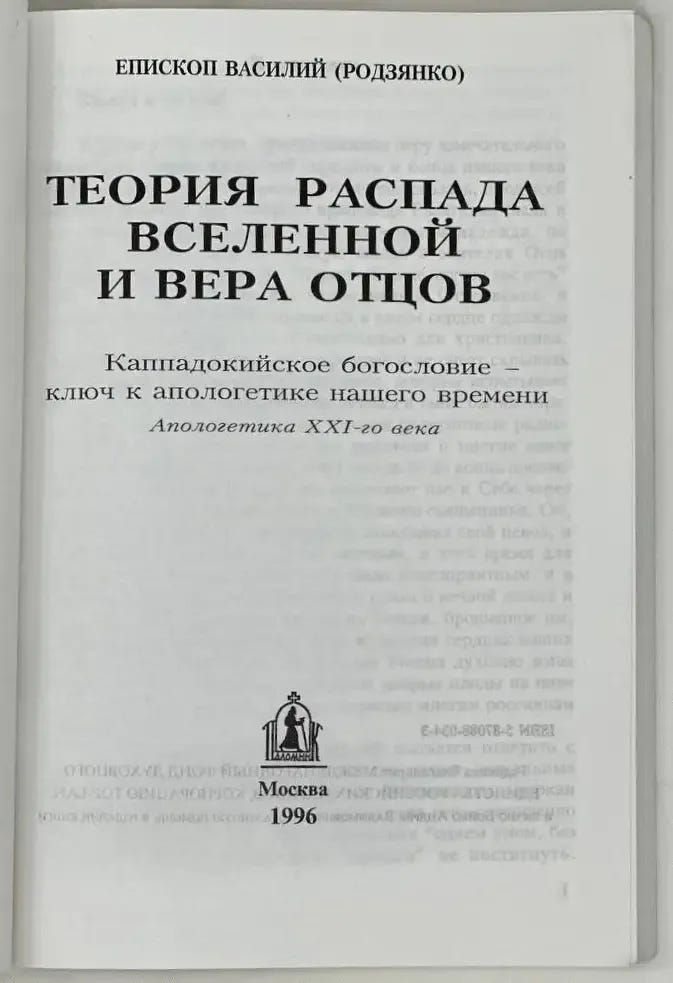Bishop Basil on the “Astrological” Completeness of All Being in Jesus Christ
Introducing a New Reading Notes Series for Bishop Basil Rodzianko's 1996 book The Theory of the Big Bang and the Faith of the Holy Fathers
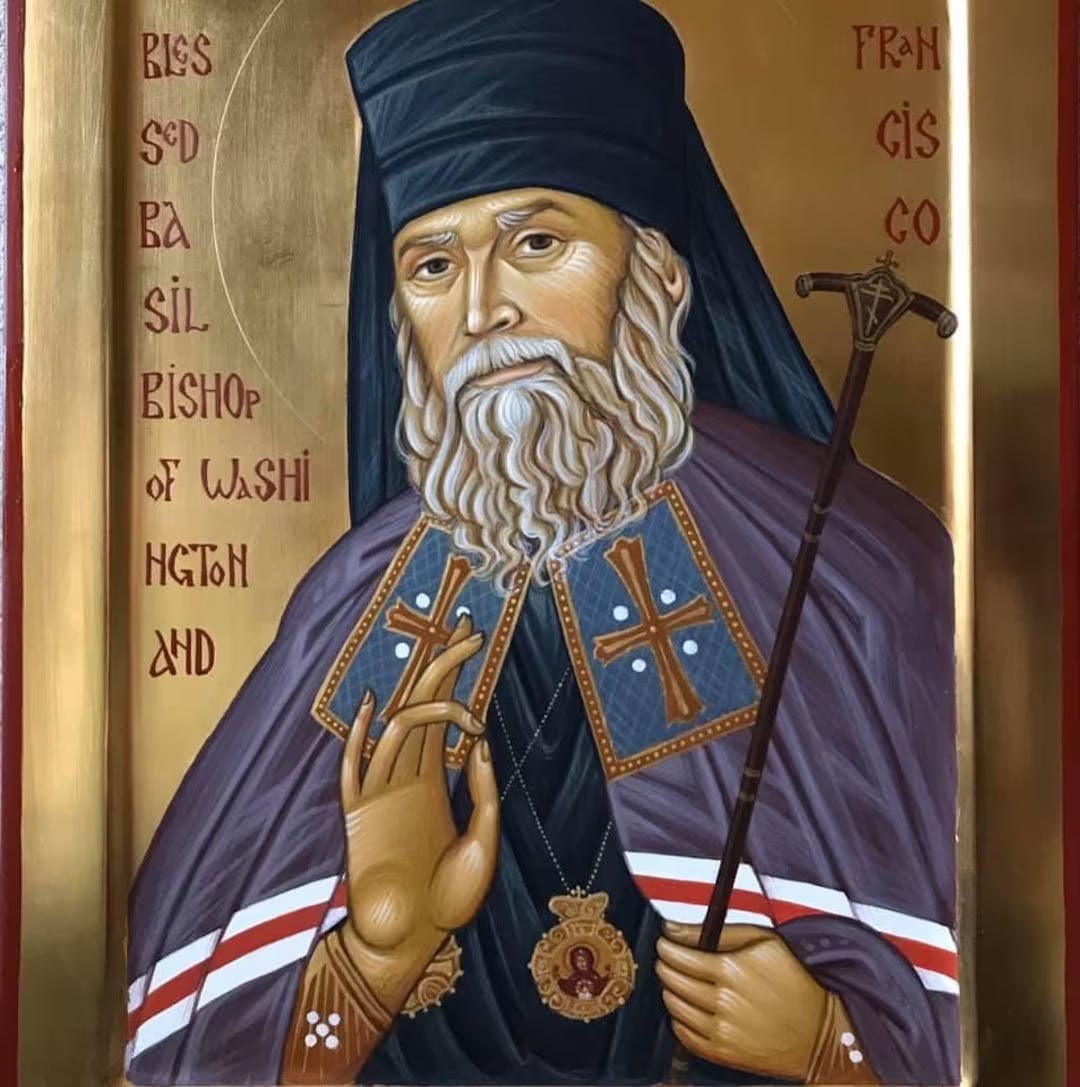
[Update from the second day of Christmas, 2024: this full book is now being made available in English here for my subscribers.]
During Advent, we should all be stargazers and cosmologists, and so I have decided to launch a second series of reading notes covering Bishop Basil Rodzianko’s wild and wonderful little 1996 book The Theory of the Big Bang and the Faith of the Holy Fathers.
So the amazing insight of Saint Basil the Great, anticipating the achievements of modern science, back in the 4th century, sixteen centuries before us, affirms the “astrological” completeness of all being in Jesus Christ. After all, the “Heavenly Christ”, in the description of the Apostle Paul, is the “New Adam”, the All-Man. And is it not because of this that an astrological vision of the world [an “Evangelical astrology”] has always been present in Christian patristic theology, both in the West and in the East?
...Astrological ideas influenced ancient Greek philosophy, which prepared the world, according to God’s Providence, for the coming of Christ the Savior. In the most hoary antiquity, in Mesopotamia, this thin dawn shone, an amazing dawn dawned. The idea of this connection—the coupling of visible stars with a unique human personality—was unexpected for a pre-Christian culture. Where did it come from? And why did it begin to grow powerfully until it resonated with all its force in Bethlehem?
In this book, Bishop Basil looks backward and forward across human learning up through Stephen Hawking in his own day and sees Christ’s incarnation as the focal point of all their insights: “Plotinus was not without reason dubbed, along with the Bethlehem sage astrologers, the pre-Christian evangelist.”
Picking up this new set of reading notes is also related to my current series of reading notes from Bulgakov’s The Bride of the Lamb (first published posthumously in 1945) that I continue to complete. While Rodzianko’s book does not refer to Bulgakov, the ways in which each of them treat the human fall share some notable similarities and differences that I want to consider as closely as my lack of Russian language will permit. In addition, Rodzianko’s book has historical interest as someone writing about and applying the works of the Cappadocian Fathers as a radio apologist for the Christian faith within his own contemporary world after its devastation by communist atheism. From 1955 to 1979, Bishop Basil (then Fr. Vladimir) organized a radio program on the BBC that was broadcast into Russia, and one of his grandsons is said on one website (see here or here) to have been killed in 1979 by the Soviet KGB in their attempts to assassinate the radio show host Fr. Vladimir Rodzianko.
Rodzianko’s says of his 1996 book that it is “an apologetics for the 21st century.” It should be read as an extension of his radio broadcasts which sought to defend the historic faith in atheist Russia. He focuses on the contemporary figure Stephen Hawking who he calls “the great physicist and sufferer of our day” and includes Hawking’s name in chapter headings such as “Dr. Hawking and St. Basil the Great” just before a chapter on “‘Imaginary’ Time” for example.
Although the full Russian text of Rodzianko’s 1996 book has been posted by this sanctioned website (here or backed up here) as well as published in a book (that I own but cannot read), only an incomplete portion of the brief introduction has been shared in an English translation by Marilyn Swezey. I will therefore be relying, most sadly, on three different AI tools (ChatGPT, DeepL Translator, and Google translate / Gemini) to work through the 63k words in Russian (or around 80k words in English from DeepL). In this series for subscribers, I will share my reflections followed by my best attempt to assemble an English version of the full text from my compilation of digital tools. Below is a table of contents followed by Bishop Basil Rodzianko’s biography. Beneath that, behind my paywall, are my first set of notes along with the full text of the “Introduction” which opens with the challenging line: “Мир сей, в котором мы живем, не был сотворен Богом.” This literally translates to “the world we live in was not created by God.” More theological context in the rest of the book is needed to understand this bold statement as I will start to consider below in my reflections on the full text of the book’s introduction (beyond the portion translated by Swezey). Watch for the next post in this series soon covering “Heaven and Heavens” (the first section of the book’s Part One).
For those not familiar with Bishop Basil’s story, here is a brief biography excerpted from here (backed up here), here (backed up here), here, and here:
Bishop Basil (Vladimir Mikhailovich Rodzianko) was born in Ukraine on his family's ancestral estate of Otrada. In 1920 the family had to flee to Yugoslavia. In 1925, Vladimir entered the First Classical Russian-Serbian High School (Gymnasium) in Belgrade where he met Metropolitan Anthony (Khrapovitsky) and also a young priest-monk John (Maximovich) who was later glorified as a saint after serving as a bishop in the Americas. Upon graduation from high school in 1933, Vladimir Rodzianko enrolled in the Department of Theology of Belgrade University from which he graduated in 1937. The next year, he married Maria Kulyubaeva and began working during that same year on a dissertation at Oxford which he never completed with the outbreak of war and the demands of priesthood. In 1939, the Rodziankos had a son and, returning to Yugoslavia, he was ordained a deacon and then a priest in Serbia in March 1941. During World War II, Fr. Vladimir was dean of a village church and secretary of the Red Cross. His parishioners experienced numerous privations and abuses by the Nazis, and he sheltered the lives of many people through the war. In 1949, as communist revolutionaries gained power in Yugoslav after the war, Fr. Vladimir was arrested by Tito’s authorities and spent two years in a labor camp before his release due in part to the intercession of Geoffrey Fisher, the Archbishop of Canterbury. Fr. Vladimir and his family were exiled to France before settling in the United Kingdom. From 1953 on, Fr. Vladimir served as the priest of the Serbian church in London. In 1955 he organized an Orthodox radio program in Russian on the BBC and hosted that program unwaveringly until 1979. Due to the popularity of these programs, the Soviet KGB targeted Fr. Vladimir for assassination, and tragically one of his grandsons was killed by communist agents seeking to kill Fr. Vladimir. In 1979 Fr. Vladimir’s wife, Maria, and his grandson, Igor, both passed away. Those who knew him at that time say that his grief was full of spiritual courage.
In 1980, after he had become a monk, he was ordained Bishop of Washington of the Orthodox Church in America, and the same year Bishop Basil became Bishop of San Francisco and California. He visited Russia in 1981 and was warmly greeted by those who had for many years admired him as an Orthodox evangelist. After his retirement in 1984, Bishop Basil continued to serve Orthodoxy. At St. Nicholas Cathedral in Washington, D.C., he cared for the needs of the parish and of individual believers, but the center of his attention now shifted to Russia. He visited the country often and stayed there for lengthy periods of time. He became the Honorary Dean of the Church of the Ascension on Nikitskaya (“the Minor Ascension”), and in his last years, Dean of the Department of Theology and Philosophy at Natalya Nesterova’s private university. With the blessing of Alexy II, the Patriarch of Moscow, he spent almost half a year at the Trinity Sergius Monastery, where he conducted research at the library and delivered a course of lectures. Drawing from these lectures, he completed his book The Theory of the Big Bang and the Faith of the Holy Fathers (published in 1996 in Russian). Bishop Basil fell asleep in the Lord in 1999 and is buried at the Rock Creek Cemetery in Washington, D.C.
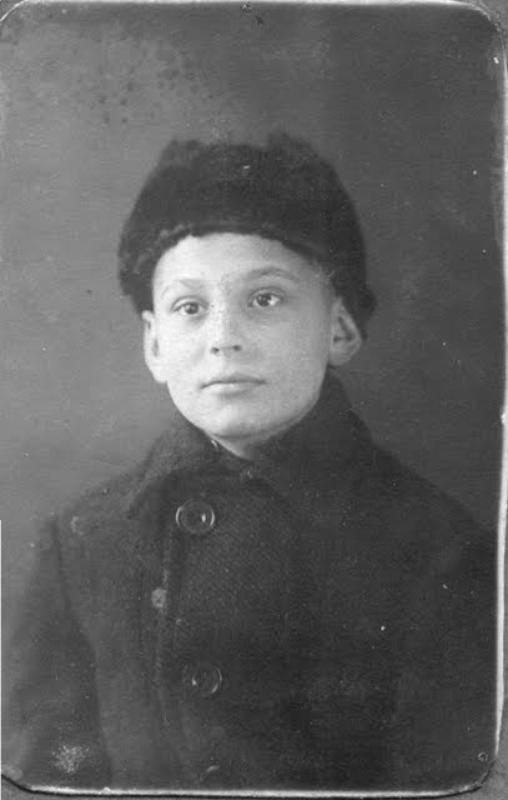
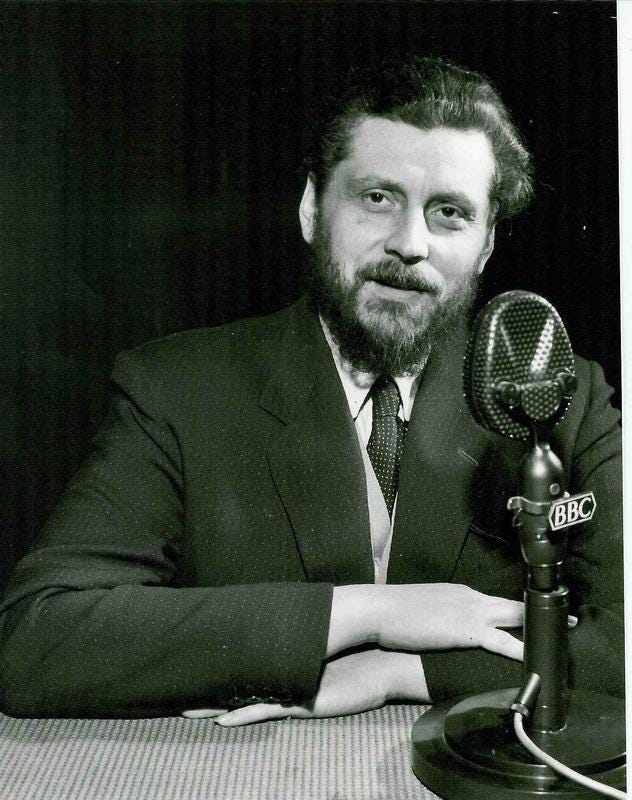
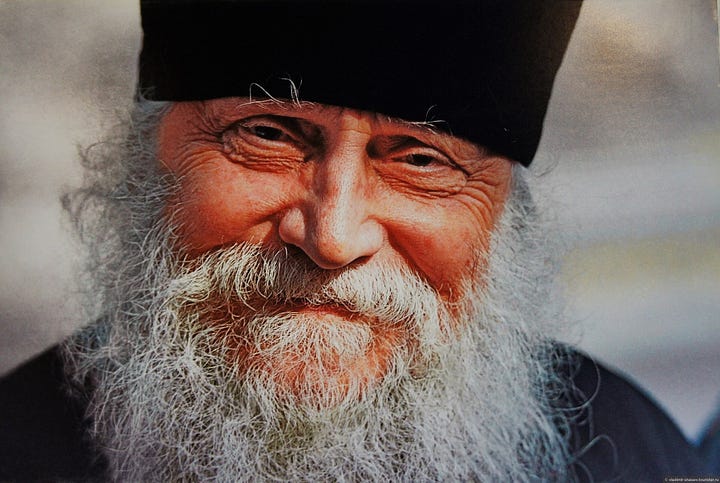
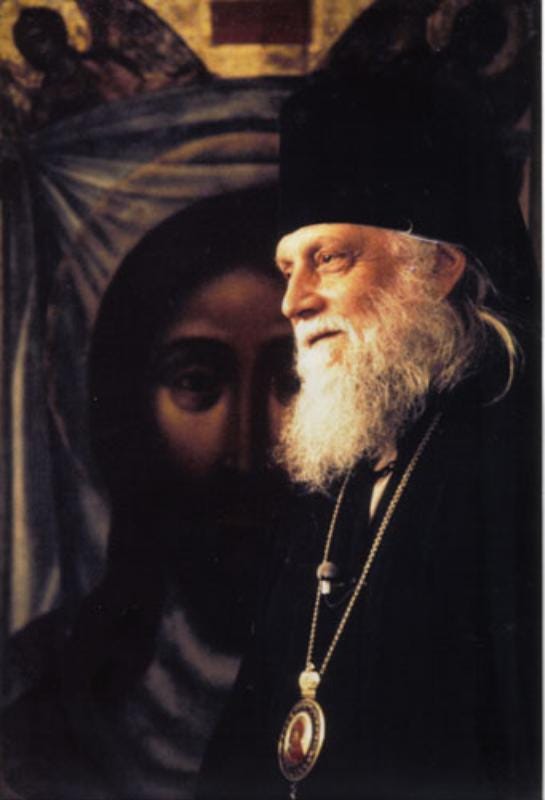
The Theory of the Big Bang and the Faith of the Holy Fathers by Bishop Basil (Rodzianko)
Table of Contents
Introduction [provided as a full text in English below]
Part 1: Cosmology and Theology
Heaven and Heavens [or “Sky and Heavens”] [see here at the bottom for the text]
History of Astrology [see here at the bottom for the text]
Uniqueness of Man [or “Human Uniqueness”] [see here at the bottom for the text]
Uniqueness of the Baby [or “Uniqueness of the Infant”] [see here at the bottom for the text]
On the Divergence from Astrology
Cosmology and Christianity
What World Do We Live In? [Or “What Kind of World Do We Live In?”]
“Big Bang”
The Anthropic Principle
Creation of the World
How God’s World, Created by Him, Differs from This World Distorted by Satan
Biblical Paradise
Tree of Life
Tree of Knowledge of Good and Evil
Shards [or “Fragments”]
The Fate of the Shards [or “The Destiny of the Fragments”]
Where Does the Tree of Knowledge of Good and Evil Come From?
Man’s Role in Saving the World
Hawking and the Catholic Church
Dr. Hawking and St. Basil the Great
“Imaginary” Time
The Omega Point
Alpha
Can Science Speak of the “Alpha” of Another World? [or “Can Science Talk About the ‘Alpha’ of an Alternate World?”]
Notes (from Part 1)
Part 2: Cappadocian Theology (Key to the Apologetics of the 21st Century)
Is St. Gregory of Nyssa an Origenist?
Revelation and Theology
Theology of the Cappadocians
Scientific Siterature on the Cappadocians
Revelation in the Arabian Desert
The First Creation of the Image of the Holy Trinity
An Attempt by Russian Theologians of the 19th and 20th Centuries: Revive Cappadocian Theology
Spirituality and Mysticism of Cappadocian Theology
Answer to the Question
Cappadocian Personalism
Personality in God
Latin Theology on Original Sin
Two Theologies: East and West
Cappadocian Theology in Liturgical Poetry
Notes (from Part 2)
Epilogue
To see a full English text version of this “Introduction” along with my notes and reflections below, please subscribe.
Keep reading with a 7-day free trial
Subscribe to Copious Flowers to keep reading this post and get 7 days of free access to the full post archives.




